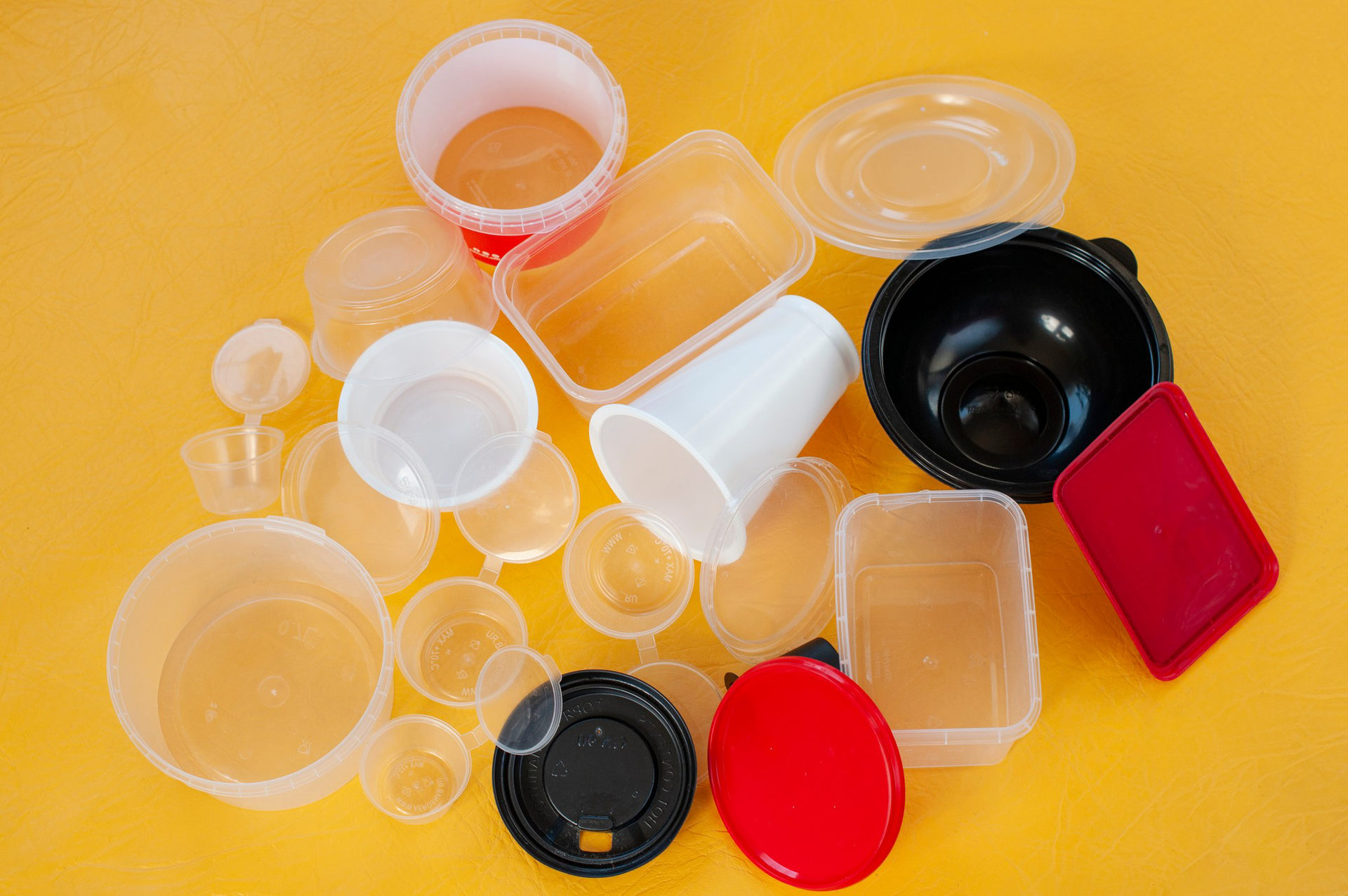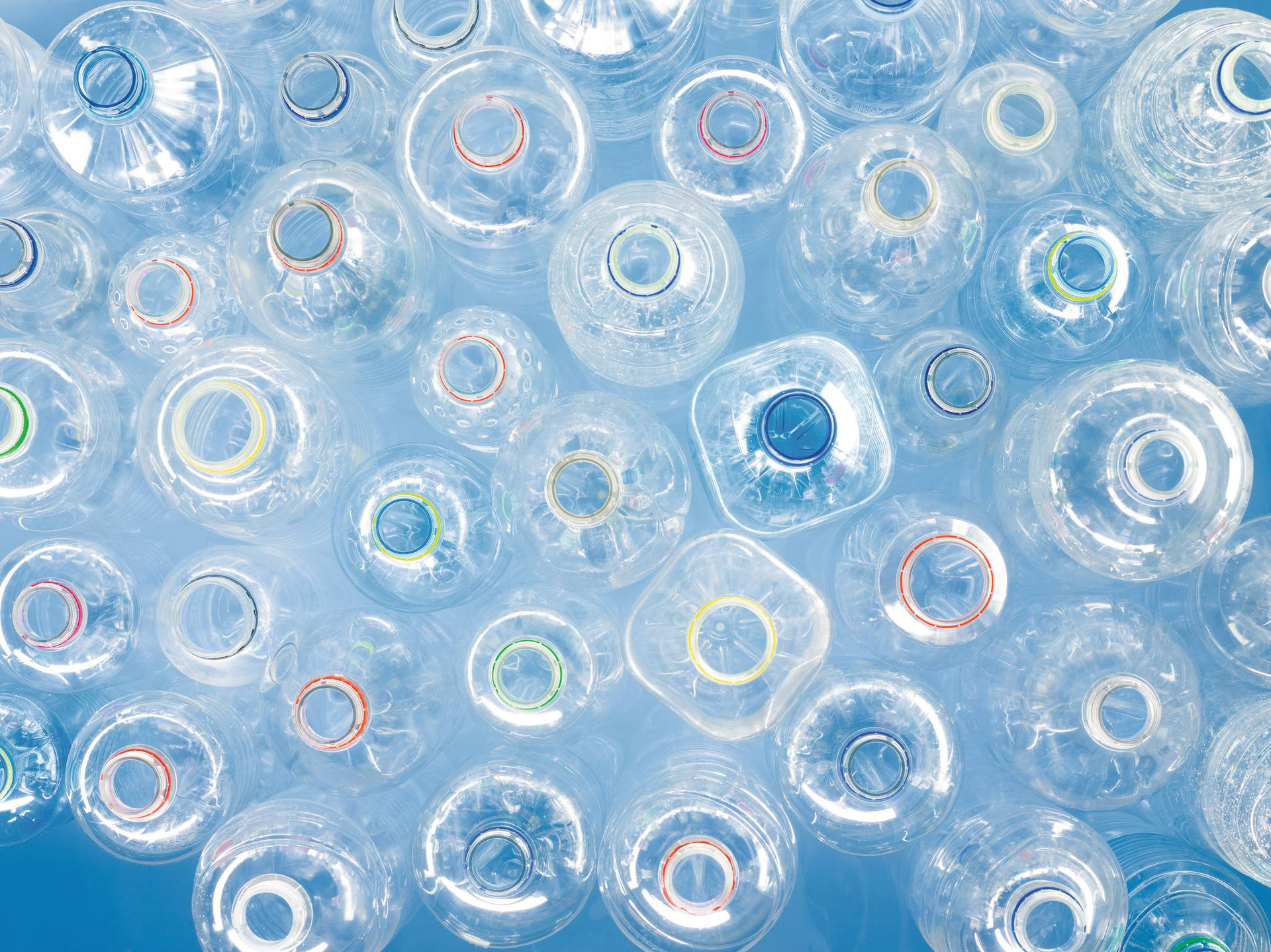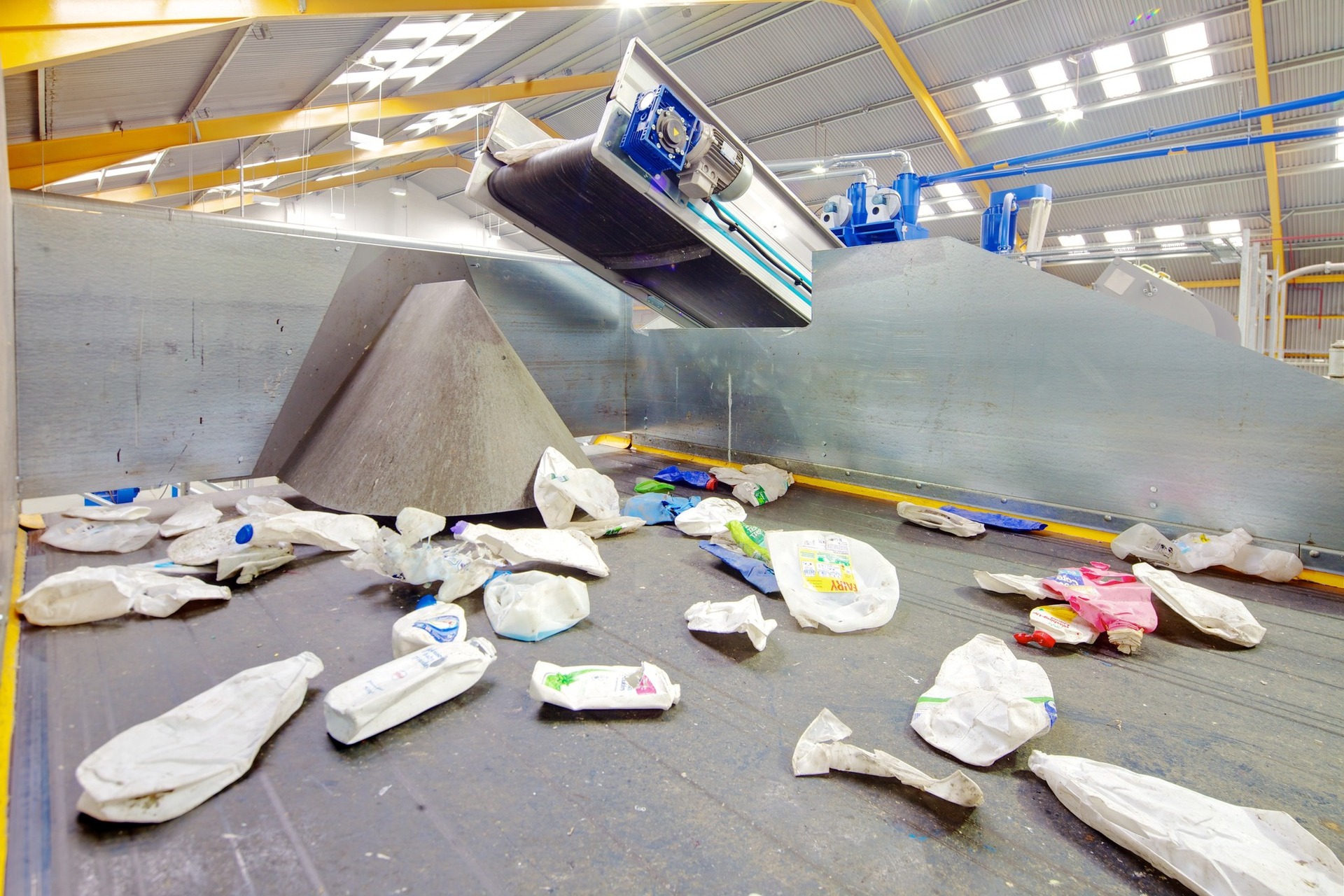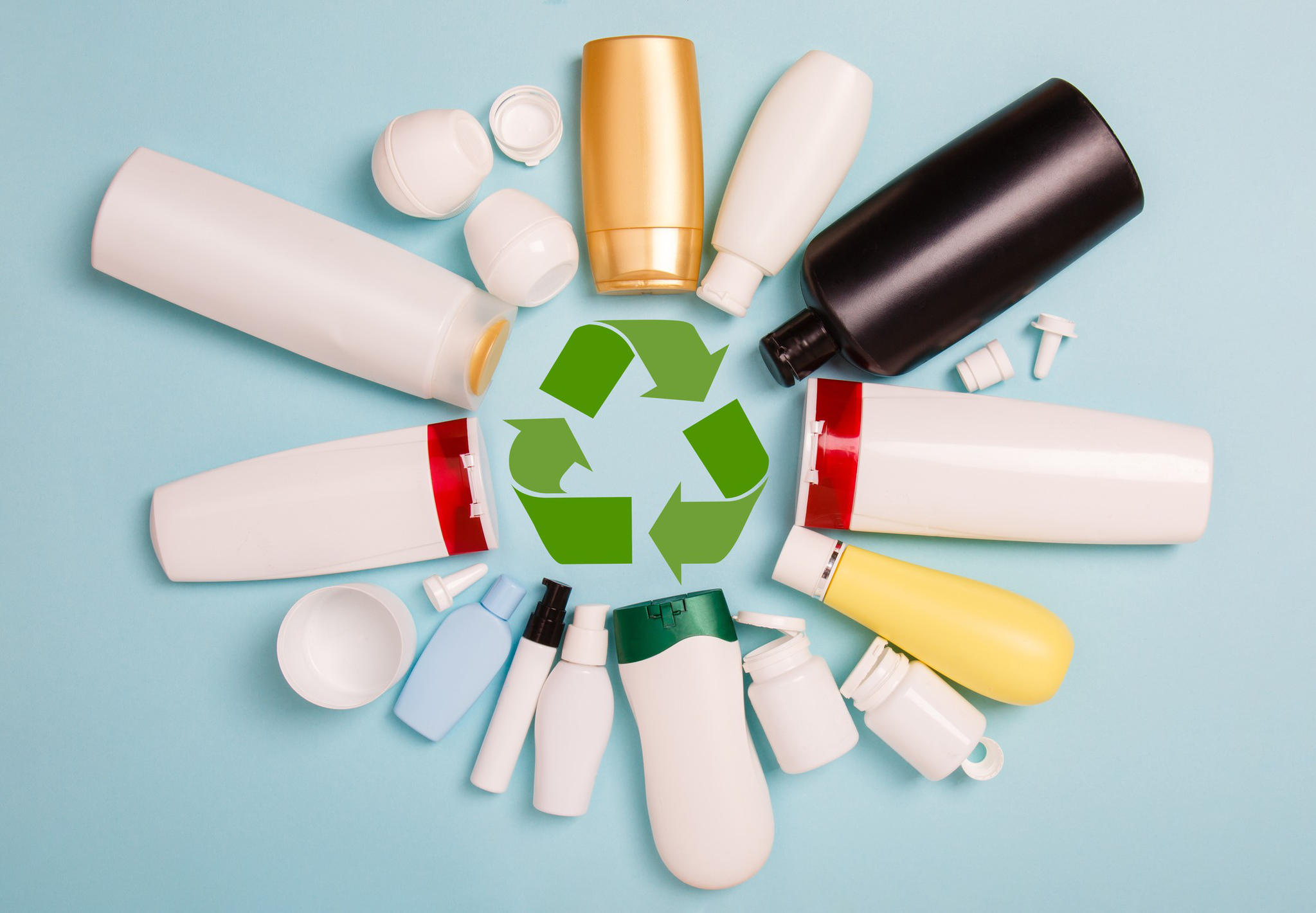On the path to a circular economy, politics initiated the Packaging Act in 2020, among other things. According to this, all products should be designed and manufactured in such a way that the packaging can either be reused or recycled after use. The goal is to produce high-quality plastic products from plastic packaging waste – supposed plastic waste. However, there are significant differences in recyclability among the various types of plastics. Particularly suitable are plastics that can be sorted in a pure form, such as polyethylene terephthalate (PET), polyethylene (PE), and polypropylene (PP).
Types of Plastics and Their Identification with Recycling Codes
Hardly any other material is more present in everyday use than plastic. Over 400 billion tons of plastic with different properties – flexible or solid, transparent or opaque, soft or hard – are produced worldwide annually.
To distinguish between the different types, there are standardized abbreviations, known as recycling codes. These provide information about the material and its proper use and recycling.
The most commonly used types of plastic at a glance

Polyethylene (PE)
With a share of around 30%, polyethylene (PE) is today the most widely used plastic worldwide. In Germany alone, more than half of all plastic packaging is made of polyethylene. PE comes in two forms: high-density (HDPE) and low-density (LDPE).
Polyethylene can be very well recycled, provided it is not bonded with other plastics to form composite material. Unlike other plastics, PE is often recycled in a functionally identical manner. New canisters are made from old canisters, new film is made from old film, etc.

Polypropylene (PP)
Polypropylene (PP) is a durable and flexible plastic, and in terms of its properties and structure, it is very similar to HDPE. With a market share of around 21%, it is the second strongest fraction in the packaging sector in Germany after PE.
PP is also generally well-suited for recycling. It can either be processed as a recyclate for reuse or directly remelted into new products. In Europe, recycled plastics can generally only be used again for food packaging after an EFSA (European Food Safety Authority) assessment. This applies in principle to all recycled plastics that come into contact with food. Since the EFSA currently lacks sufficient data on r-PP from mechanical recycling, the material is generally not approved for food contact. Therefore, r-PP is mostly used to make items such as garden furniture, park benches, and equipment rather than new packaging.

Polyethylene terephthalate (PET)
PET is primarily known as the material for single-use and reusable bottles for beverages. However, many other plastic packaging materials are also made from PET.
Regarding recycling, PET is the plastic with the best recycling record in Germany. This fact is mainly due to the deposit system for single-use beverage packaging introduced in 2003. As a result, 99% of all PET bottles are collected and used as a basis for new products. PET can be repeatedly processed into high-quality products and retains its properties even after frequent processing. Thus, a new PET beverage bottle can be made entirely from recycled PET.
Recycling potentials for PE and PP
Recycling only PET would by no means be sufficient to achieve the ambitious climate goals in the future. The European association of plastic recyclers Plastics Recyclers Europe (PRE) sees great potential for the recycling of polyethylene (PE), the second most processed plastic in the EU with around 9 million tons per year. Despite the fact that PE is well recyclable, today's recycling rates of low-density PE are only around 31%. According to PRE, higher rates would be possible. The association states that, for example, plastic film waste is still perceived as a difficult waste stream to handle, although Europe has already proven that stretch film recycling is indeed possible.
To better exploit recycling potentials, on the one hand, the design of products would need to be even more focused on their recycling in the future, and on the other hand, existing recycling technologies would need to be further developed. The association also calls for the introduction of harmonized collection and sorting processes at the EU level to increase both the quantity and quality of collected waste.
The recycling of PP bottles, containers, and thermoplastics is also becoming increasingly interesting and represents another important area of the recycling market. With recycled PP, a wide variety of end products for various applications can be produced. However, similar to PET waste, the quality and condition of collected PP waste fluctuate. Often, the quality of the collected material is very low. Therefore, it is also necessary here to continuously develop PP recycling technologies and provide new technical solutions to fully exploit the recycling potential of polypropylene.

High-quality PE and PP recycling with the help of modern sorting technologies.
The variety of packaging made from PE or PP is large. From the caps of beverage bottles and Tetra Paks to shampoo or milk bottles and cleaning agent containers, a colorful mix of items of different colors, sizes, and shapes comes together. These end up, especially since there is no return system for PE or PP bottles in many countries, mixed in the yellow bin, at recycling centers, or in household waste and are pre-sorted by sorting facilities. The different nature and the various, sometimes chemical contents of these packages increase the requirements for sorting and recycling.
Only very few recycling plants are also capable of producing food-grade PE recyclate. In addition, there are hardly any official approvals for PE and PP recyclates for food packaging. For this reason, there are also hardly any buyers for these recyclates so far.
By using the right technologies, the recycling potential of PP and PE could be much more utilized in the future. Modern sorting systems reliably recognize and sort types of plastic, colors, shapes, metals, and foreign bodies. Thanks to a sorting accuracy of up to 99%, they achieve the highest levels of purity. Innovative lighting and camera technologies also enable the detection of hard-to-distinguish colors and functional materials such as barrier bottles or additives.
Sorters from Sesotec, for example, offer recyclers the greatest possible flexibility in sorting, as they can be individually adjusted and optimized – whether for sorting bottles, caps, or even plastic shredder material.
Conclusion
Since the introduction of the yellow bin in 1991 and the deposit system for bottles in 2003, plastic recycling has been continuously expanded. Thus, packaging is not simply thrown away after use; it is used as a secondary raw material for the production of new packaging and thus remains as raw materials in the value chain.
Furthermore, the collection, sorting, and processing of packaging represent an important economic sector. And on the political side, the circular economy in Europe is gaining increasing importance, which is reflected not least in the strict legal requirements for packaging and its recycling.
However, the recycling potential, especially for PE and PP, is far from being exhausted. Many recycling companies still lack the right technologies to sort various plastic packaging by type and produce high-quality recyclate that can be used in the production of new packaging, thus making the circular economy possible.

